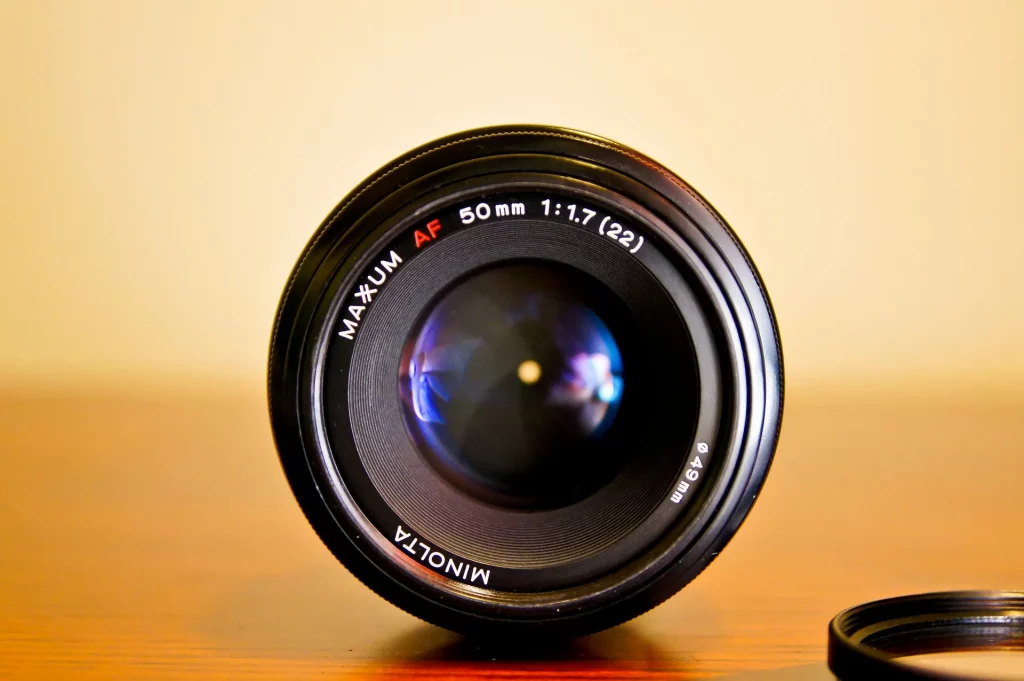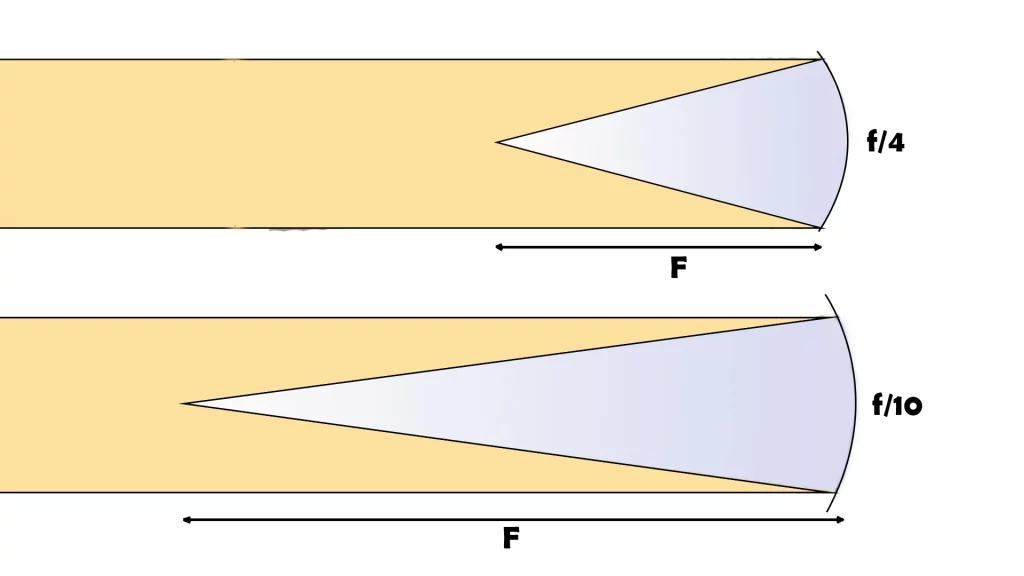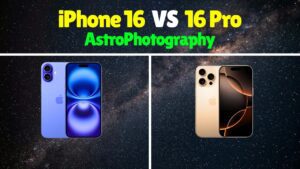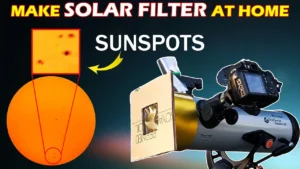
Previously we explained the telescope’s focal length. One more important parameter is its focal ratio. Same as aperture & focal length, the focal ratio is also always mentioned in the specifications of a telescope.

A simple formula for focal ratio is the focal length divided by the aperture of the telescope. If you have a telescope that has an aperture of 150mm & its focal length is 1500mm then its focal ratio is 10. It is written like this (f/10).
f = \frac{Focal \: length \:of \:a\:telescope }{Aperture\:of \:the\:telescope}So, this parameter completely depends on the first two most important parameters of a telescope. With the help of the focal ratio, you can determine the speed of the telescope.
What exactly is the speed of the telescope?
The speed aspect of a telescope comes from a photography point of view. A telescope is usually a fast telescope or a slow telescope.
Let’s understand this with an example of a camera lens. Let’s say, you have two identical lenses of similar focal lengths, but one lens has a wide aperture and the other lens has a narrow aperture. Now to collect the same amount of light a wide aperture lens will take less time than a narrow aperture lens. So, the wide aperture lens is a fast lens and the narrow aperture lens is a slow lens. The same principle applies to telescopes.

Speed of a telescope, Example
For example, if the focal ratio of a is 2. Then that is a fast telescope. If it is 10, then that is a slow telescope.
Any telescope which has a focal ratio below 5 is considered fast. A telescope that has a focal ratio above 8 is considered slow. Anything between 5 to 8 is for both.
We know the formula to calculate the focal ratio, from this formula you can know that a telescope with a longer focal length will mostly be a slow telescope. And a telescope with a short focal length will mostly be a fast telescope. If you notice, in the focal ratio formula the aperture is also considered. So aperture also affects the focal ratio. For example, a telescope that has a long focal length and very big aperture, then its focal ratio might be below 5. So it can also be a fast telescope. This aspect of a fast or slow telescope is very much useful for astrophotography. Capturing the moon and planets is possible with the slow focal ratio. But if you want to capture the images of deep space objects then you will need a fast focal ratio.
A fast focal ratio will give you a slightly brighter image as it collects more light in a short time. On the other hand, a slow focal ratio will have slightly dimmer images compared to a fast focal ratio telescope. For example, a telescope with a 150mm aperture and a focal length of 1500mm will have a focal ratio of 10. Now a similar telescope with a 150mm aperture and focal length of 600mm will have a focal ratio of 4.
Why fast & slow telescopes will have different brightness?
As both the telescopes have similar apertures & they will collect the same amount of light. Then, how come fast & slow telescopes will have different brightness?
The answer is in focal length. As the telescopes have different focal lengths. In the short focal length telescope, the light travels less, and thus it is more concentrated when it hits the eyepiece or camera lens. As you know, more light means brighter images.
In the long focal length telescope, the light has to travel more inside the telescope so the images you will see are slightly dimmer. Also, the slow telescope will take slightly more time to collect the same amount of light as the fast telescope. So it will have slightly less concentrated light, that’s why the images will be slightly dimmer.

What if you want to do stargazing without astrophotography?
If you just want to see the moon and planets then you should prefer a slow focal ratio. It will usually have a longer focal length and higher magnification. Higher magnification will help you to see the details of the moons and planets.
Deep space objects are far away, it’s difficult to collect a lot of light from these far-distant objects for a bright image. So, here you need a telescope that can absorb maximum light in a very short time. So, if you want to observe deep space objects, you should prefer a fast focal ratio. As it will collect more light in a short time. So you can see those dim deep space objects clearer.
If you have a longer focal length telescope then you can use the focal reducer to reduce the focal length of your telescope. We have explained this in this video. Make sure you watch it.
Which one should you buy?
Even though the focal ratio is an important parameter, the aperture is the most important parameter of a telescope. It will determine everything you see with the telescope. So, if you want to observe the moon and planets. Then go for a big aperture telescope with a slow focal ratio usually above 8.
And if you want to observe the deep sky objects then go for a big aperture telescope with a fast focal ratio usually below 5.
If you want to do both then you can prefer a big aperture telescope with a focal ratio from 5 to 8.
We hope you understood everything about the focal ratio of a telescope. If you want to know more about stargazing and astronomy then check out other articles on this site & also check out our YouTube channel.





